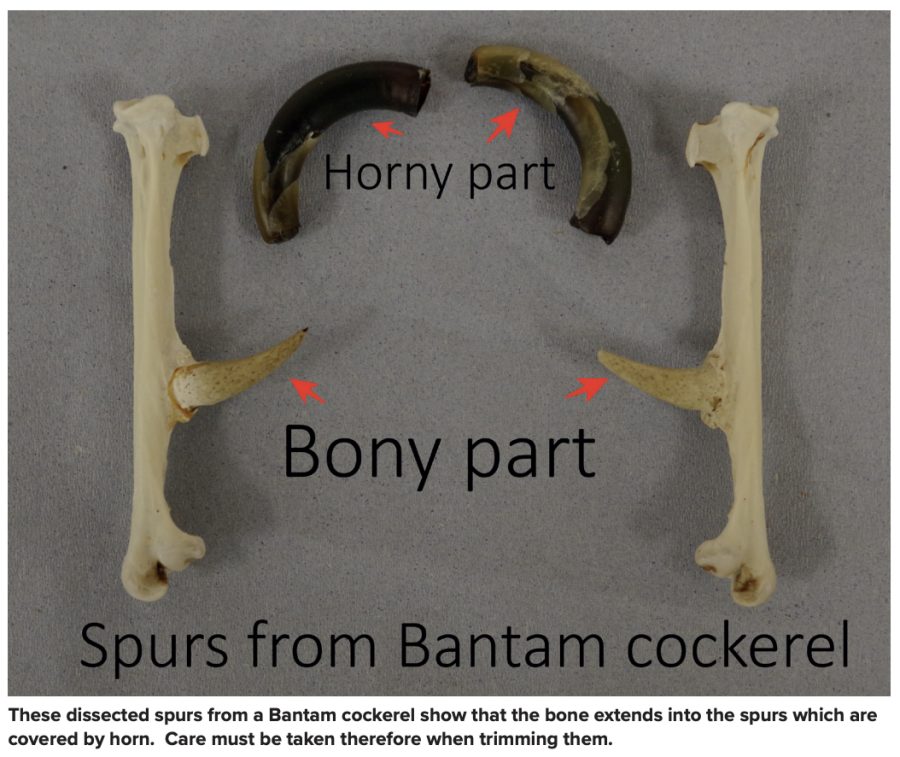Experienced poultry vet, David Parsons, offers his advice on keeping chickens’ toenails and spurs in check…
Avian Influenza is still rumbling on but nowhere near the problem it was before Christmas.
This is to be expected. We are going to have to learn how to live with avian influenza in the same way that we will have to learn to live with this new human coronavirus. It is something that takes years, not days or months. I spent the first 20 years of my working life trying to minimise the affects of a coronavirus in chicken flocks.There have been many different chicken coronavirus variants with significantly different ones appearing every two to three years.
However, over the last decade with the careful application of vaccines, this no longer seems to be happening, in the UK at least. I anticipate that we will experience a similar situation with avian influenza. The virus is still in the wild bird population and mixed poultry and waterfowl backyard flocks are still at risk. I would hazard a guess at saying more of a risk because the warmer weather and fewer outbreaks leads to relaxing of basic hygiene precautions resulting in introduction of the virus into your flock.
KEEP AN EYE ON YOUR CHICKENS’ TOENAILS
Last time, I told you that I was preparing a skeleton. I am currently putting this 3D jigsaw back together. I found the spurs particularly interesting but will include comments about toenails.Toenails can become trapped, torn off or simply overgrown. Spurs can do the same although they have the added disadvantage that they can have very sharp points. Toenails that have been torn off or partially torn should be carefully cleaned up. Warm water containing a little disinfectant should be used. If it is still bleeding then apply pressure using a clean absorbent pad or a little styptic powder can be applied.The bird should be kept apart from the rest of the flock for 24 hours.
Depending on the extent of the damage, the toenail may need to be trimmed. Overgrown toenails should be trimmed back. If you are lucky you will be able to see the bone in the nail. However, if the nails are not translucent, or a little dirty, then clip off a little and often.
There are many different types of clipper available but if you have dogs then the clippers for them should work on your birds.
TAKE GREAT CARE WHEN TRIMMING TOENAILS
The bone will normally extend very nearly to the end of the nail. Consequently, when trimming long nails take little pieces, 2-3mm off the end. If you draw blood then apply the styptic pencil or powder. Stop trimming. This nail will also be a guide to where the bone is likely to be in the other nails.
Alternatively, if you just want to take the sharp points off then use a nail file. Spurs can cause bruising and broken skin on your legs, so consider how a hen’s skin may be damaged when mating. Excessively long spurs can curl back and dig into the cockerels leg or foot. Long sharp pointed spurs can cause significant damage. Therefore, it may be desirable to shorten or blunt them. Remember that the spurs are how the cockerel protects himself and the hens. Blunting and shortening spurs may leave him more exposed to injury.
From about six months of age the spur has a bony link with the lower limb. The bone and blood vessels supplying it will be richly supplied with nerves. These nerves will detect pain. On no account should the outer horny layer be removed to leave the exposed bone. A so called blunt spur!
You can see the bony spur firmly attached to the leg and the blunted horn in the picture above. Removing the horny covering on the spur is akin to pulling your finger or toenails out. It is extremely painful. You can cut spurs back in the same way you would a toenail. Some of my colleagues have completely removed spurs from cockerels (under anaesthesia as this would be a painful procedure) that persist in attacking children and selected adults. I prefer to file spurs, but that will still take two people. Having done the one spur, it is not until you compare it with the opposite spur that you appreciate the difference. Check for jagged edges and smooth these down. So, keep an eye on toenails and spurs ensuring they do not grow too long. Take remedial action sooner rather than later.
This article extract was taken from Practical Poultry in the May edition of The Country Smallholder, available to purchase here.
To receive regular copies of The Country Smallholder magazine featuring more articles like this, subscribe here.
For FREE updates from the world of smallholding, sign up for The Country Smallholder newsletter here.







